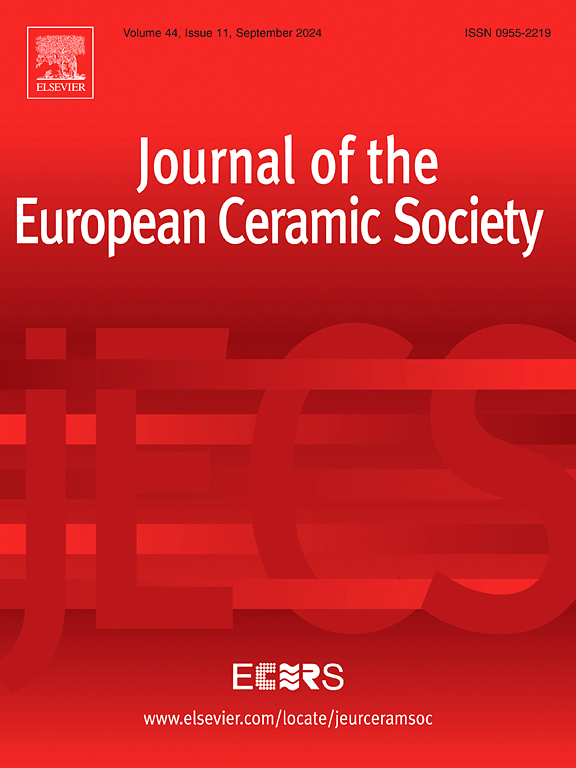Enhancing proton-conducting solid oxide fuel cell performance with Pr-doped BaZr0.5Fe0.5O3-δ cathodes
IF 5.8
2区 材料科学
Q1 MATERIALS SCIENCE, CERAMICS
Journal of The European Ceramic Society
Pub Date : 2025-05-09
DOI:10.1016/j.jeurceramsoc.2025.117526
引用次数: 0
Abstract
Developing high-performance cathodes remains crucial for advancing proton-conducting solid oxide fuel cells (H-SOFCs). While Fe-doped BaZrO3 (BZF), derived from the proton conductor BaZrO3, demonstrates moderate performance, it underperforms compared to recently reported cathodes. To address this limitation, we introduce Pr as a co-dopant in BZF, creating BaZr0.4Fe0.5Pr0.1O3 (BZFPr). Pr-doping induces electronic structure modifications that weaken metal-oxygen bonds, generating abundant oxygen vacancies and enhancing protonation capabilities. These changes synergistically improve oxygen and proton diffusion kinetics. Furthermore, Pr doping elevates the oxidation state of Fe, significantly boosting oxygen reduction reaction (ORR) activity. After microstructural optimization, BZFPr achieves exceptional performance with a peak power density of 1686 mW cm−2 and a low polarization resistance of 0.059 Ω cm2 at 700 °C—values surpassing most state-of-the-art cathodes. The BZFPr cathode also exhibits remarkable operational stability under fuel cell conditions, establishing Pr doping as an effective strategy for developing high-performance, durable cathodes for H-SOFCs.
掺pr的BaZr0.5Fe0.5O3-δ阴极增强质子导电固体氧化物燃料电池性能
开发高性能阴极对于推进质子传导固体氧化物燃料电池(H-SOFCs)的发展至关重要。虽然由质子导体BaZrO3衍生而来的掺铁BaZrO3 (BZF)表现出中等的性能,但与最近报道的阴极相比,它表现不佳。为了解决这一限制,我们在BZF中引入Pr作为共掺杂剂,创建了BaZr0.4Fe0.5Pr0.1O3 (BZFPr)。pr掺杂诱导电子结构修饰,削弱金属-氧键,产生丰富的氧空位,增强质子化能力。这些变化协同改善氧和质子扩散动力学。此外,Pr掺杂提高了Fe的氧化态,显著提高了氧还原反应(ORR)活性。经过微结构优化,BZFPr在700°c时的峰值功率密度为1686 mW cm−2,极化电阻低至0.059 Ω cm2,超过了大多数最先进的阴极。BZFPr阴极在燃料电池条件下也表现出卓越的运行稳定性,这表明Pr掺杂是开发高性能、耐用的氢sofc阴极的有效策略。
本文章由计算机程序翻译,如有差异,请以英文原文为准。
求助全文
约1分钟内获得全文
求助全文
来源期刊

Journal of The European Ceramic Society
工程技术-材料科学:硅酸盐
CiteScore
10.70
自引率
12.30%
发文量
863
审稿时长
35 days
期刊介绍:
The Journal of the European Ceramic Society publishes the results of original research and reviews relating to ceramic materials. Papers of either an experimental or theoretical character will be welcomed on a fully international basis. The emphasis is on novel generic science concerning the relationships between processing, microstructure and properties of polycrystalline ceramics consolidated at high temperature. Papers may relate to any of the conventional categories of ceramic: structural, functional, traditional or composite. The central objective is to sustain a high standard of research quality by means of appropriate reviewing procedures.
 求助内容:
求助内容: 应助结果提醒方式:
应助结果提醒方式:


